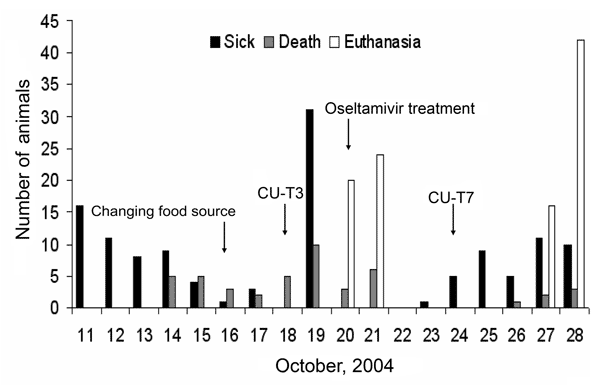Volume 11, Number 5—May 2005
Dispatch
Probable Tiger-to-Tiger Transmission of Avian Influenza H5N1
Figure 2

Figure 2. . Numbers of sick, dead, or euthanized tigers during the outbreak. The animals were fed cooked chicken carcasses or pork after October 16, 2004. Isolates from the sick tigers, pre- and posttreated with oseltamivir, were A/Tiger/Thailand/CU-T3/04 (October 18) and A/Tiger/Thailand/CU-T7/04 (October 24).
Page created: April 24, 2012
Page updated: April 24, 2012
Page reviewed: April 24, 2012
The conclusions, findings, and opinions expressed by authors contributing to this journal do not necessarily reflect the official position of the U.S. Department of Health and Human Services, the Public Health Service, the Centers for Disease Control and Prevention, or the authors' affiliated institutions. Use of trade names is for identification only and does not imply endorsement by any of the groups named above.